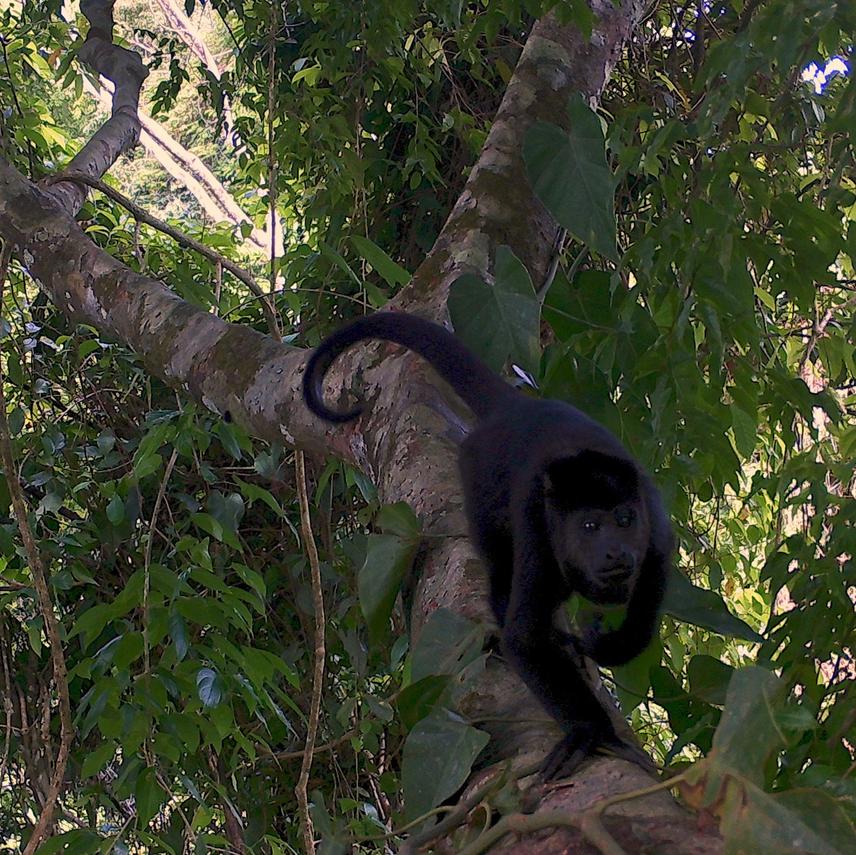Sabine Juliette Cudney Valenzuela
Land-use change is a major threat to biodiversity, particularly in tropical rainforests – the terrestrial ecosystems with the highest biodiversity in the planet. Human-modified tropical landscapes show different spatial structure (e.g. forest cover, number of forest patches, inter-patch isolation distance), but our understanding on the landscape variables that favor species persistence is very poor, especially for the plant and animal species that live in the canopy stratum. This study will assess the direct effect of landscape structure on canopy structural attributes (e.g. tree height, epiphyte coverage, liana density and connectivity), and the effects that such landscape and canopy changes may have on arboreal mammals – an understudied and endangered guild, highly sensitive to forest disturbance, which is of paramount relevance to preserve rainforest integrity.

Tropical rainforests – the most biodiverse terrestrial ecosystem – are increasingly threatened by land-use change, which modifies landscape structure (e.g. forest loss, fragmentation, forest isolation), causing several cascading effects on biodiversity. Species respond differentially to changes in landscape structure according to their habitat requirements and capacity of movement. The canopy stratum maintains a major proportion of tropical vertebrate biodiversity that depends on particular canopy structural attributes (e.g. tree height heterogeneity, epiphyte abundance). Yet, research in human-modified tropical landscapes is biased towards a few terrestrial taxa, overlooking the impact of landscape structure on the forest canopy system. To my knowledge, the present project will be the first to identify the landscape and local (canopy structural attributes) variables with highest impact on the arboreal mammal community.
Arboreal mammals play critical ecological roles in tropical ecosystems, many of them of key relevance for forest maintenance. Such roles include seed dispersal, seed predation, herbivory, and plague control. Unfortunately, as arboreal mammals are forest specialist organisms, changes in canopy structure related to changes in landscape patterns threaten the maintenance of these important animals. The extinction of these species can alter the functioning and forest ecosystems’ resilience and limit ecosystem services provision. Therefore, understanding the response of these animals to habitat alteration is crucial to preserve rainforest integrity.
Here, I will assess the direct effect of landscape structure (i.e. percentage of forest cover, percentage of open area matrices, number of forest patches, forest edge density, and mean inter-patch isolation distance) on canopy structure (i.e. arboreal strata height, percentage of epiphyte coverage, and liana density and connectivity), the direct effect of canopy structure on arboreal mammals, and the cascading effects of landscape structure on canopy structure on the arboreal mammal community. The study will take place in the Lacandona rainforest, one of Mexico’s most important biodiversity hotspots critically threatened with land-use change. By identifying the landscape variables that best predict arboreal mammal responses I will be able to identify the most effective species-specific conservation actions. For example, some species could be particularly sensitive to forest loss, whereas others could be more sensitive to fragmentation/connectivity. Thus, evaluating the consequences that current land-use changes may have on this guild is critical to provide important guidelines for land management to minimize local species extinction and favor the maintenance of ecosystem functioning